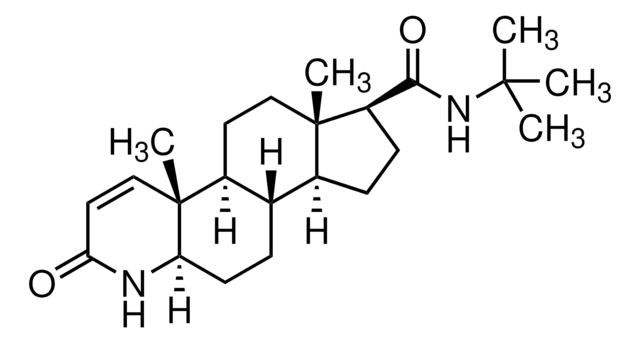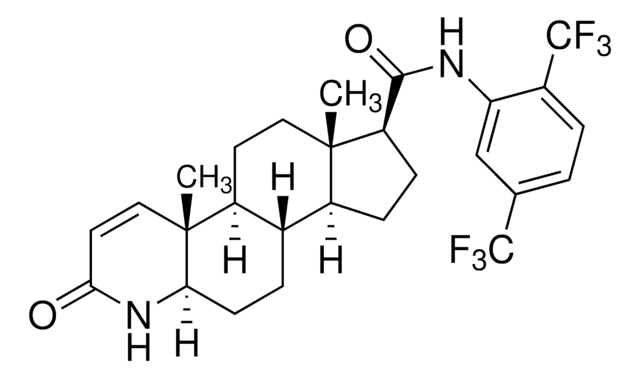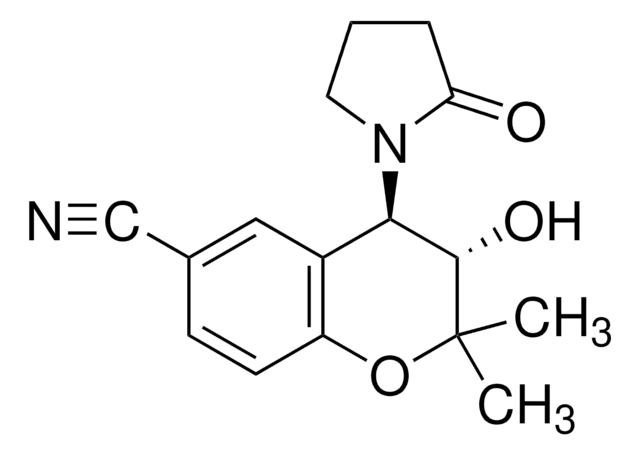M4145
Minoxidil
≥99% (TLC), powder, potassium channel activator
Synonyme(s) :
6-(1-Piperidinyl)-2,4-pyrimidinediamine 3-oxide, 6-(1-Piperidinyl)pyrimidine-2,4-diamine 3-oxide
About This Item
Produits recommandés
Nom du produit
Minoxidil, ≥99% (TLC)
Essai
≥99% (TLC)
Pf
272-274 °C (dec.) (lit.)
Auteur
Johnson & Johnson
Chaîne SMILES
NC1=CC(=NC(=N)N1O)N2CCCCC2
InChI
1S/C9H15N5O/c10-7-6-8(12-9(11)14(7)15)13-4-2-1-3-5-13/h6,11,15H,1-5,10H2
Clé InChI
ZIMGGGWCDYVHOY-UHFFFAOYSA-N
Informations sur le gène
human ... KCNJ1(3758)
Vous recherchez des produits similaires ? Visite Guide de comparaison des produits
Catégories apparentées
Application
- in dermal papilla spheroid model, to study the effect of hair regeneration
- administered orally to experimental rats, in the approach to identify biomarkers of drug induced vascular injury
- administered via oral gavage to nonhuman primate model in order to study its effect on tilt responses
Actions biochimiques/physiologiques
Caractéristiques et avantages
Mention d'avertissement
Warning
Mentions de danger
Conseils de prudence
Classification des risques
Acute Tox. 4 Oral - Eye Irrit. 2 - Skin Irrit. 2 - STOT SE 3
Organes cibles
Respiratory system
Code de la classe de stockage
11 - Combustible Solids
Classe de danger pour l'eau (WGK)
WGK 3
Équipement de protection individuelle
dust mask type N95 (US), Eyeshields, Gloves
Faites votre choix parmi les versions les plus récentes :
Déjà en possession de ce produit ?
Retrouvez la documentation relative aux produits que vous avez récemment achetés dans la Bibliothèque de documents.
Les clients ont également consulté
Notre équipe de scientifiques dispose d'une expérience dans tous les secteurs de la recherche, notamment en sciences de la vie, science des matériaux, synthèse chimique, chromatographie, analyse et dans de nombreux autres domaines..
Contacter notre Service technique








